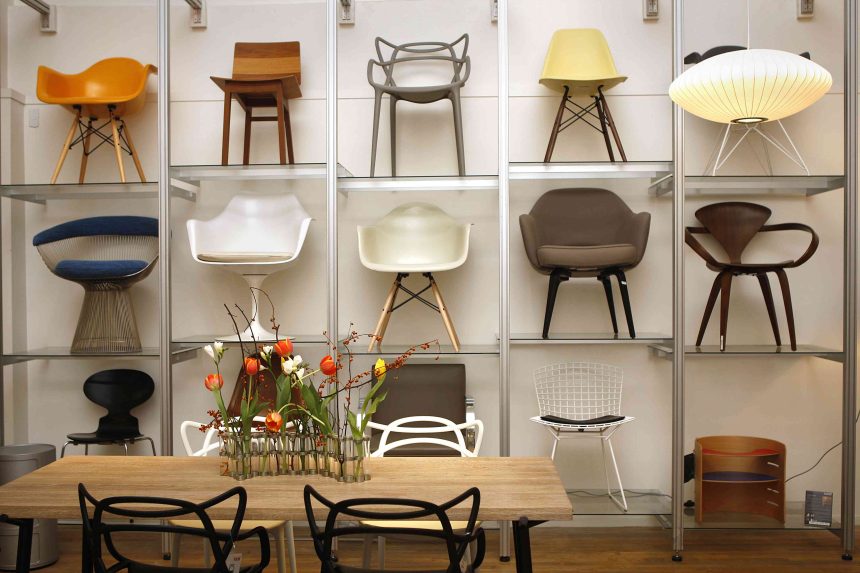If you’re looking to find fantastic furniture without spending an arm and a leg, going to your local thrift store is a smart move. Whether it’s a chain, like Goodwill, or a more local spot, you can often find unique pieces that you can’t get at one of those big box stores.
There’s just one problem. Sometimes, it’s hard to know if the piece you find is truly high quality or something that will break in a few months. Fortunately, a little knowledge can go a long way, and knowing what to look for can help you differentiate between a deal and a dud. Here’s how to spot high-quality pieces at thrift stores.
- Alex Spielman, interior designer and founder of The Little Things
- Katie Zamprioli content creator and thrifting expert, better known by her Instagram handle, Candy Colored Home
Don’t Just Look With Your Eyes
Alex Spielman, interior designer and founder of The Little Things, says it’s important to check the fundamentals of each piece. For wood pieces, she advises going with solid wood that has substantial weight and joints.
According to content creator and thrift expert Katie Zamprioli, who is better known by her Instagram handle, Candy Colored Home, it’s best to avoid anything plastic or made from particle board because it’s likely those pieces are lower quality. Look for woods that are hand-carved and feature a heavy grain. “Get handsy—pick up and touch the item and inspect the material and the way it’s put together to see if it’s a quality piece,” she says. “Pay close attention to any damage and how it’s constructed. If there is glue all around the seams, that’s never a good sign. The weight of the piece and the feel of the fabric or materials used on it are also good indicators.”
Inspect Upholstered Pieces
“For upholstered pieces, like reading chairs for nurseries, I check under cushions for hardwood frames and hand-tied springs—these details signal quality,” says Spielman.
However, just because the upholstery is ripped or stained doesn’t mean the quality is low. As long as the frame is high quality, you can always reupholster the item and give it a new life.
Look for Silk
Material can also indicate quality. For example, silk upholstery is a finer material than cotton or synthetic materials. “If you’re looking at an antique couch and the fabric is silk, that’s a good sign,” says Zamprioli.
Avoid Anything With Veneer Peeling
If you notice the veneer is peeling, it’s probably not a high-quality piece, according to Spielman. If you see the veneer is glued or the joints are wobbly, she says these are also signs to leave the item behind.
Check Out the Hardware
If the original hardware looks high quality, that’s a good sign. However, if the hardware isn’t exactly your style (but the rest of the piece is), Spielman advises still buying it and swapping it out. “One of my favorite ways to transform a thrift store find is to swap out the hardware—it’s amazing how a set of unique knobs can completely elevate a piece,” she says.
Bring a Magnet
Before you hit up your favorite thrift store—grab a magnet off your fridge. You can test metals to see if they’re brass, reveals Zamprioli. “Brass is a non-magnetic metal, so you can test it with a magnet,” she says.
Don’t have a magnet? Try the sound test. “If you tap your metal and it produces a high-pitched sound, it’s likely to be brass,” Zamprioli says. “Sometimes pieces are brass-plated, so if you see a shiny yellow scratch, the item is likely solid brass. If you see a silvery scratch, your piece is likely white metal, such as zinc.”
Look For Markings
Zamprioli always recommends scanning pieces for various labels, stamps, markings, and signatures. “Sometimes they are inside drawers, underneath, or on the back of the furniture,” she says. “Whenever possible, research them on your phone if you aren’t familiar to see what kind of deal you’re getting. You should always snap a pic and run it through Google Lens to see if an item match pops up.”
While this might seem challenging at first, the thrifting expert says that the more frequently you go, the better you’ll get at identifying quality materials.
Don’t Miss the Artwork
If you’re looking for furniture, you might also want to check out the decor, like paintings. Spielman advises specifically paying attention to the frames. “Higher quality frames often indicate valuable art pieces,” she explains. “For canvas pieces, check if the paint continues over the edges. That typically suggests original work.”
Expand Your Search Criteria
If you live in a big city and aren’t finding quality pieces, Zamprioli advises expanding your search to smaller surrounding towns. “Chances are that the bigger cities are oversaturated with vintage hunters looking to make the next big score, and you have a much better chance of finding something cool in a small, random town,” she explains. “I usually head out within a 40-mile radius to the local Goodwill, then search thrift stores, antique stores, and vintage shops in my Google Maps app and hit up as many as I can that are close by.”







